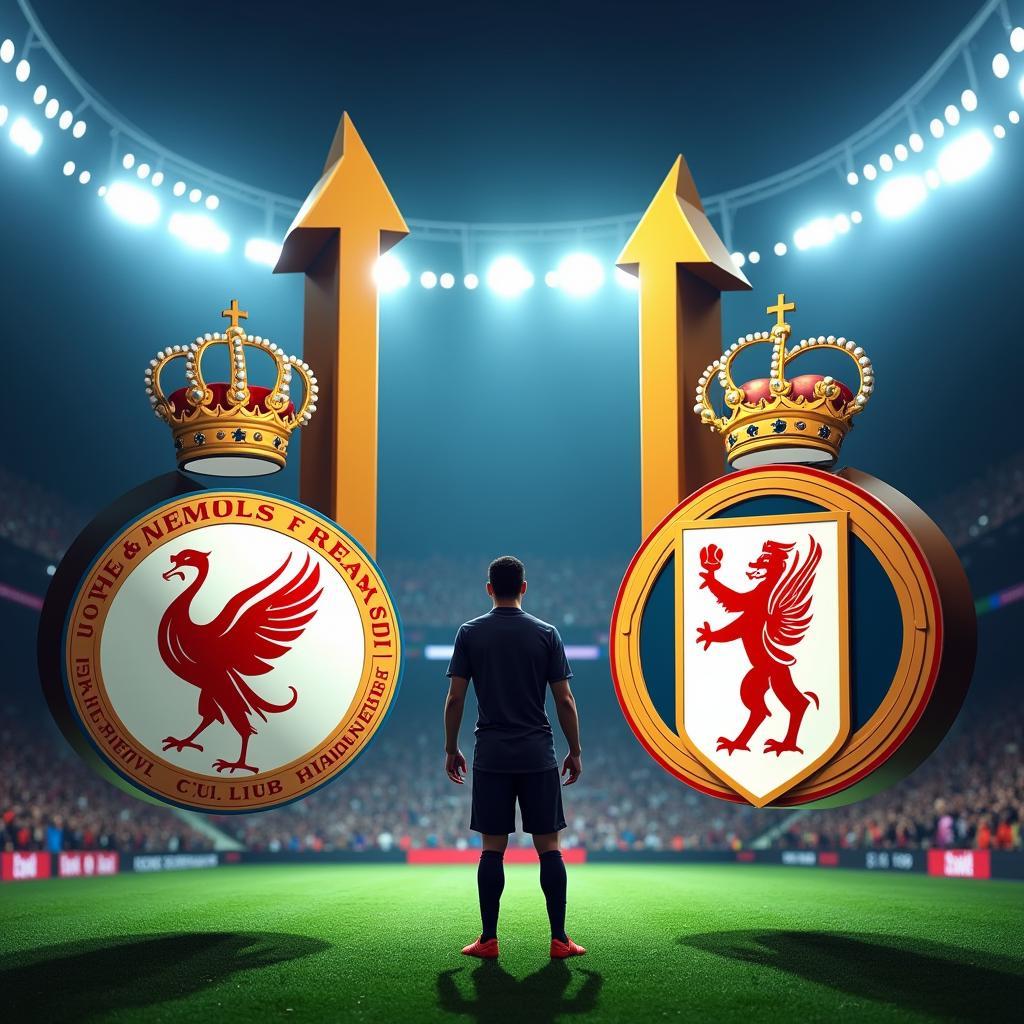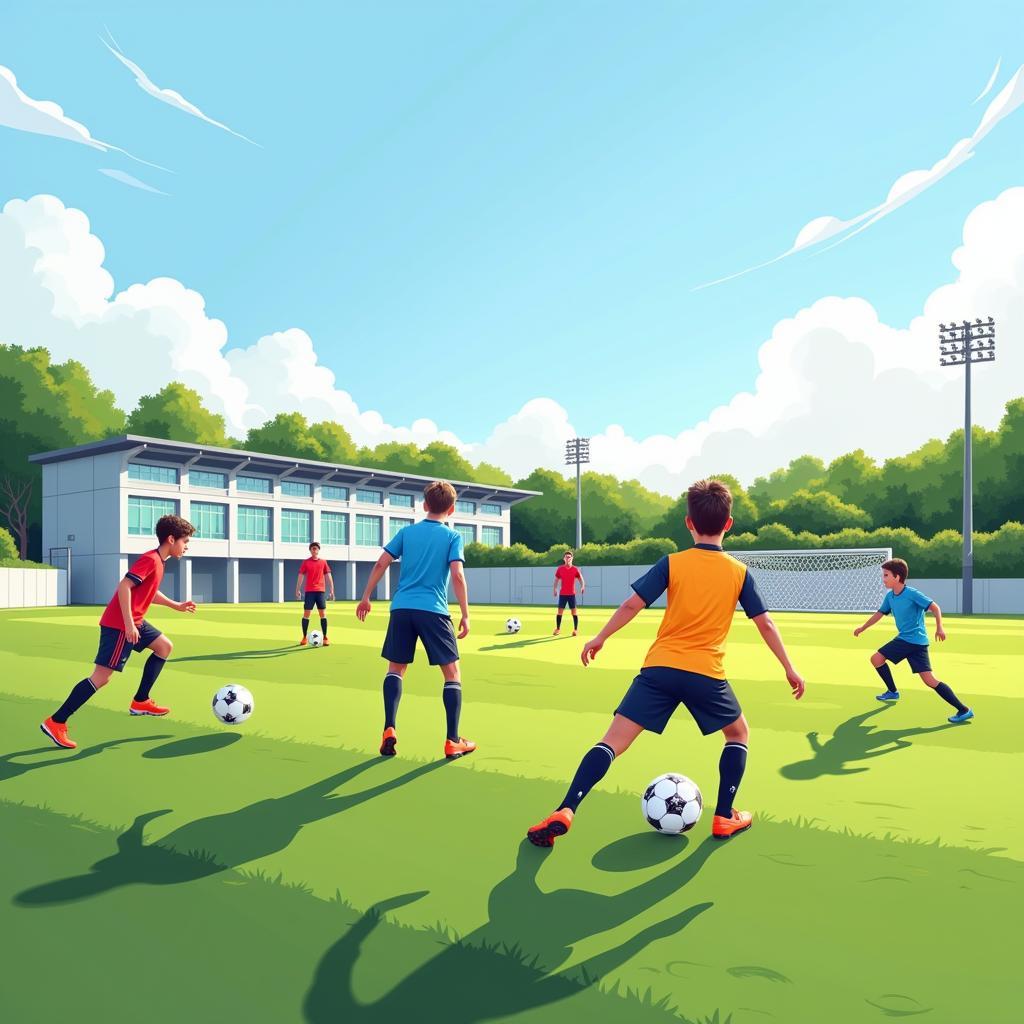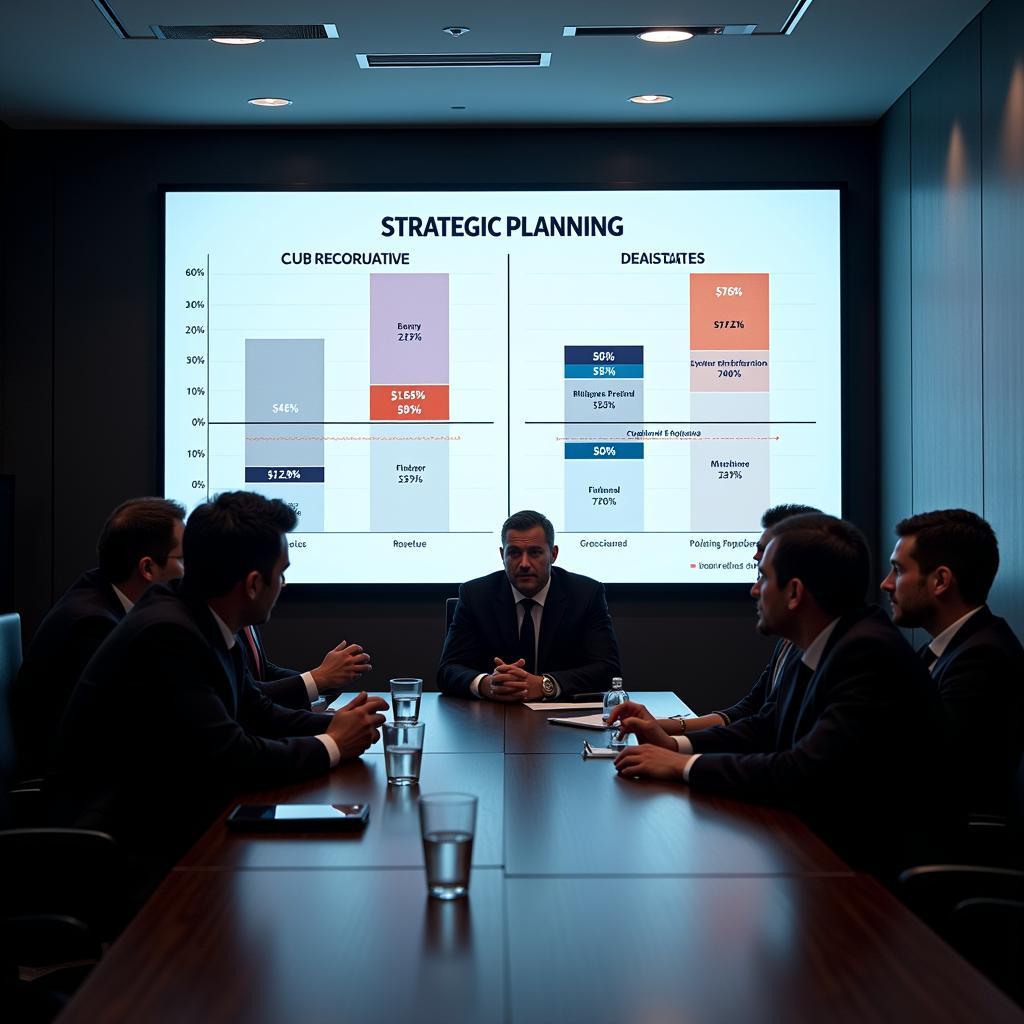Cost Vs Quality is a constant dilemma in football. From player acquisitions to youth development, every decision involves balancing financial constraints with the desire for success. How clubs navigate this trade-off often dictates their fortunes on and off the pitch. This article delves into the complexities of cost vs quality in football, examining various aspects from player recruitment to stadium infrastructure.
Balancing the Books: Transfer Fees and Wages
Player recruitment is arguably the most visible aspect of the cost vs quality debate. Big-money signings often grab headlines, but do they always guarantee success? While top-tier talent comes at a premium, there are countless examples of expensive flops. Conversely, shrewd scouting and astute acquisitions can unearth hidden gems at a fraction of the cost. The key lies in identifying players who not only possess the required skills but also fit the team’s tactical system and overall philosophy. The Moneyball approach, famously employed by Billy Beane at Oakland A’s, demonstrates the power of data-driven recruitment, focusing on value rather than reputation. This model, increasingly adopted in football, emphasizes statistical analysis to identify undervalued players who can contribute significantly to the team’s performance.
 Cạnh tranh giá cả chuyển nhượng
Cạnh tranh giá cả chuyển nhượng
The challenge for clubs is to find a sustainable model that balances short-term needs with long-term vision. Investing heavily in one or two star players can cripple a club financially, especially if those players fail to deliver. A more balanced approach involves building a squad with a mix of established stars and promising youngsters.
Youth Development: Nurturing Future Stars
Investing in youth development is another crucial aspect of the cost vs quality equation. While academies require significant financial investment, they can produce exceptional talent at a fraction of the cost of established stars. A successful youth academy not only provides a pathway for young players to the first team but also becomes a valuable asset, generating revenue through player sales. Furthermore, developing homegrown talent fosters a sense of identity and connection with the local community.
 Đào tạo trẻ
Đào tạo trẻ
However, building a thriving academy requires more than just financial resources. It demands a clear vision, a structured curriculum, and experienced coaches dedicated to nurturing young talent. Furthermore, patience is essential, as developing young players into first-team regulars takes time and careful management.
Infrastructure: The Foundation for Success
While player recruitment and youth development are crucial, infrastructure also plays a significant role in the cost vs quality balance. Modern stadiums, training facilities, and medical centers are essential for attracting and retaining top talent. These investments represent a significant cost, but they can pay dividends in the long run by enhancing the club’s brand, attracting sponsors, and improving player performance. Moreover, investing in state-of-the-art facilities can improve player recovery and reduce injury rates, ultimately contributing to better results on the field. As seen in the Assisted Living vs Nursing Home Care discussion, infrastructure plays a vital role in the overall quality of care.
Similar to choosing between White Gold vs Yellow Gold, the decision between investing in immediate needs versus long-term gains is crucial. Understanding the trade-offs and prioritizing effectively can lead to a sustainable and successful future.
Cost vs Quality: A Holistic Approach
Ultimately, the cost vs quality debate in football isn’t about choosing one over the other. It’s about finding the right balance. Clubs that succeed are those that adopt a holistic approach, considering all aspects of their operations and making strategic decisions that align with their overall goals. This is not unlike the considerations one makes when choosing between Ductless Heat Pump vs Ducted Heat Pump or Slide Film vs Negative – a deep understanding of the specific needs and available resources is essential. Smart clubs understand that investing wisely in all areas, from player recruitment to youth development and infrastructure, is essential for sustained success in the highly competitive world of professional football.
 Chiến lược đầu tư bóng đá
Chiến lược đầu tư bóng đá
Conclusion
Navigating the complex relationship between cost and quality in football is a constant challenge. By adopting a strategic approach that considers all aspects of the game, clubs can build sustainable models for success both on and off the field. The key lies in finding the right balance, investing wisely in player recruitment, youth development, and infrastructure while staying true to the club’s values and long-term vision. Remember, cost vs quality isn’t a zero-sum game; it’s about finding the sweet spot that maximizes performance and ensures long-term sustainability.
FAQ
-
What is the “Moneyball” approach in football?
-
How can youth academies contribute to cost savings?
-
Why is infrastructure investment important for football clubs?
-
What are some examples of expensive player transfers that didn’t work out?
-
How can data analytics be used in player recruitment?
-
What are the key factors to consider when balancing cost and quality in football?
-
How can clubs ensure long-term sustainability while maintaining competitiveness?
Khi cần hỗ trợ hãy liên hệ Số Điện Thoại: 0372999888, Email: [email protected] Hoặc đến địa chỉ: 236 Cầu Giấy, Hà Nội. Chúng tôi có đội ngũ chăm sóc khách hàng 24/7.